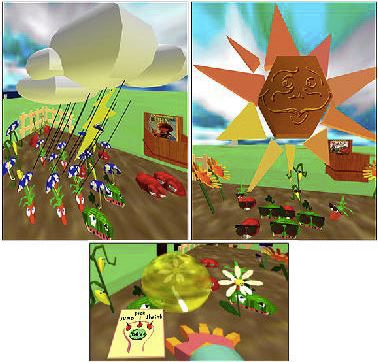Issues in the Design and Evaluation of a Virtual Reality Learning Environment
May 1st, 1997
Categories: Applications, Education, MS / PhD Thesis, Software, Tele-Immersion, VR

Authors
Roussou, M.About
This thesis describes the design, development, and evaluation of the NICE (Narrative Immersive Constructionist / Collaborative Environments) project, a virtual learning environment implemented for the CAVE. Two central questions are explored in this work. First, what are the issues that must be addressed in designing immersive virtual environments for education, and second, can virtual reality environments be effective tools for learning?
The question of the design of open-ended, exploratory learning environments, such as NICE, is addressed through the analysis of current educational theories. These theories are presented and related to the design of the virtual learning environment.
The issues of the evaluation of NICE are explored through observational studies conducted with a total of 52 children between the ages of 5 and 11. These studies examine the environment from a technical, orientational, affective, cognitive, and pedagogical perspective.
Finally, the thesis presents direction for future studies in these domains.
Resources
Citation
Roussou, M., Issues in the Design and Evaluation of a Virtual Reality Learning Environment, Submitted as partial fulfillment of the requirements for the degree of Master of Science in Electrical Engineering and Computer Science, University of Illinois, Chicago, IL, May 1st, 1997.